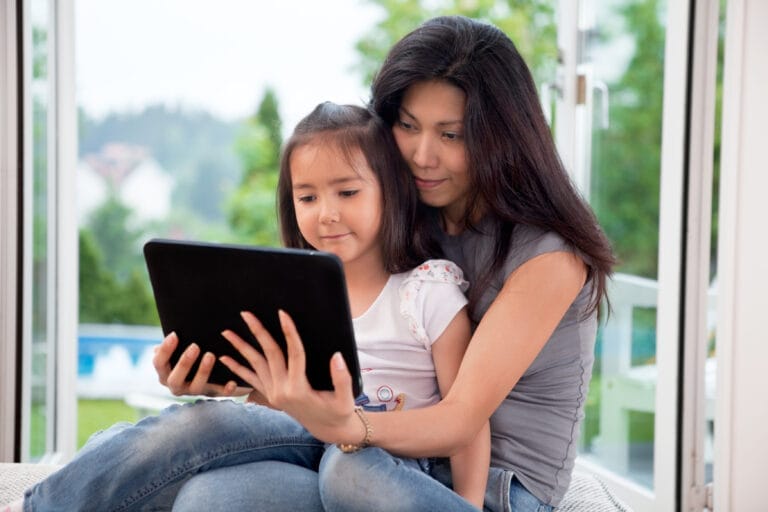
Just as too much television was once a cause for concern for child development, overuse of technology on smartphones and tablets now worry parents, educators, and researchers. Hearing, vision, speech and language development, social communication skills, sleep, physical activity, and brain development can all be adversely impacted by too much screen time and overuse of earbuds or headphones.
The American Academy of Pediatrics recommends limiting screen time for children between the ages of two and five to an hour of high-quality programing per day. It also important for children to have set times that are free of devices, such as during dinner or before bedtime, and for parents to model good habits for their kids.
Screen time, however, can be an important and engaging part of learning when it is well managed. The content and purpose of an app or website is key to turning screen time into time spent learning and developing skills. For example, content that gets kids up and moving can be great as opposed to sitting on a couch and passively consuming videos for pure entertainment. Eye Can Learn provides exercises that help build visual processing. Starfall has activities for reading, math, and language arts for young learners. There are other apps that work on grammar, story building, and letter formation.
Parents, teachers, and therapists can get even more specific too. For example, parents can use a phonemic awareness app with their children at home, focusing specifically on the phonemes their child is working on in therapy. Such activities can be helpful in carrying over skills outside of the therapy room. SLPs, OTs, and mental health professionals can guide parents on usage, like recommending using an app for 10 minutes with their child every other day. One caveat though: be sure the child can work with the app and has had some success with the skill in therapy first; otherwise, it can be a frustrating experience at home.
Another way to incorporate technology into the home, classroom, or therapy session is to use it for research. If a child has a question, work with them to look up the answer and discern between sources.
If you are working with an entire class, technology can be used to get everyone up and moving together. Following along with a YouTube video that shows how to do the hand jive, for example, develops motor skills and can help to get the wiggles out. Virtual field trips or connecting with classrooms across the country – or across the globe – can be powerful ways to expand your students’ horizons.
Technology is also used for differentiated instruction. Using a letter formation app can help students to learn handwriting skills when they don’t respond well to using paper and pencil. Therapists visit and observe in the classroom and consult with teachers on suggesting ways to differentiate.
When it comes to vetting apps and content, here are a few final tips:
- Check for parental control and messaging, and disable messaging features to keep your child safe.
- Make sure the content is specific; kids don’t need access to every YouTube video or game out there. Keep content that is specific to the child’s goals.
- Look for progress tracking. While this is a nice-to-have, seeing progress is engaging for kids, parents, and therapists alike.

Adrian Mamikonian, M.A., CCC-SLP, is the Senior Clinical Practice Director for Speech-Language Pathology for PresenceLearning, and Elizabeth Haas, MS, OTR/L, is the Clinical Practice Director for Occupational Therapy for PresenceLearning.



